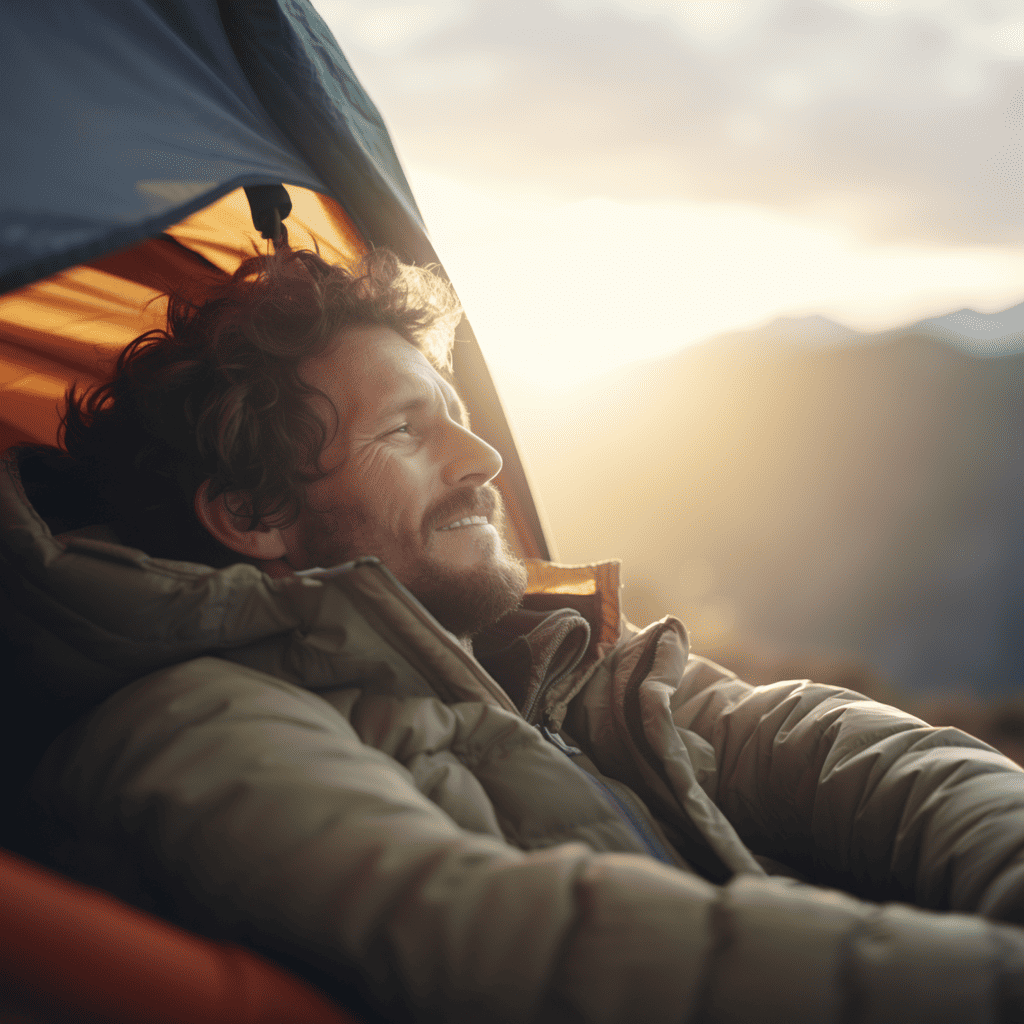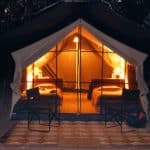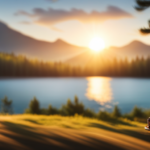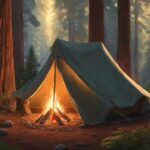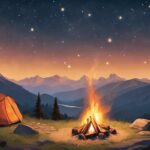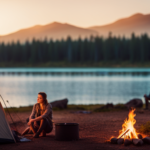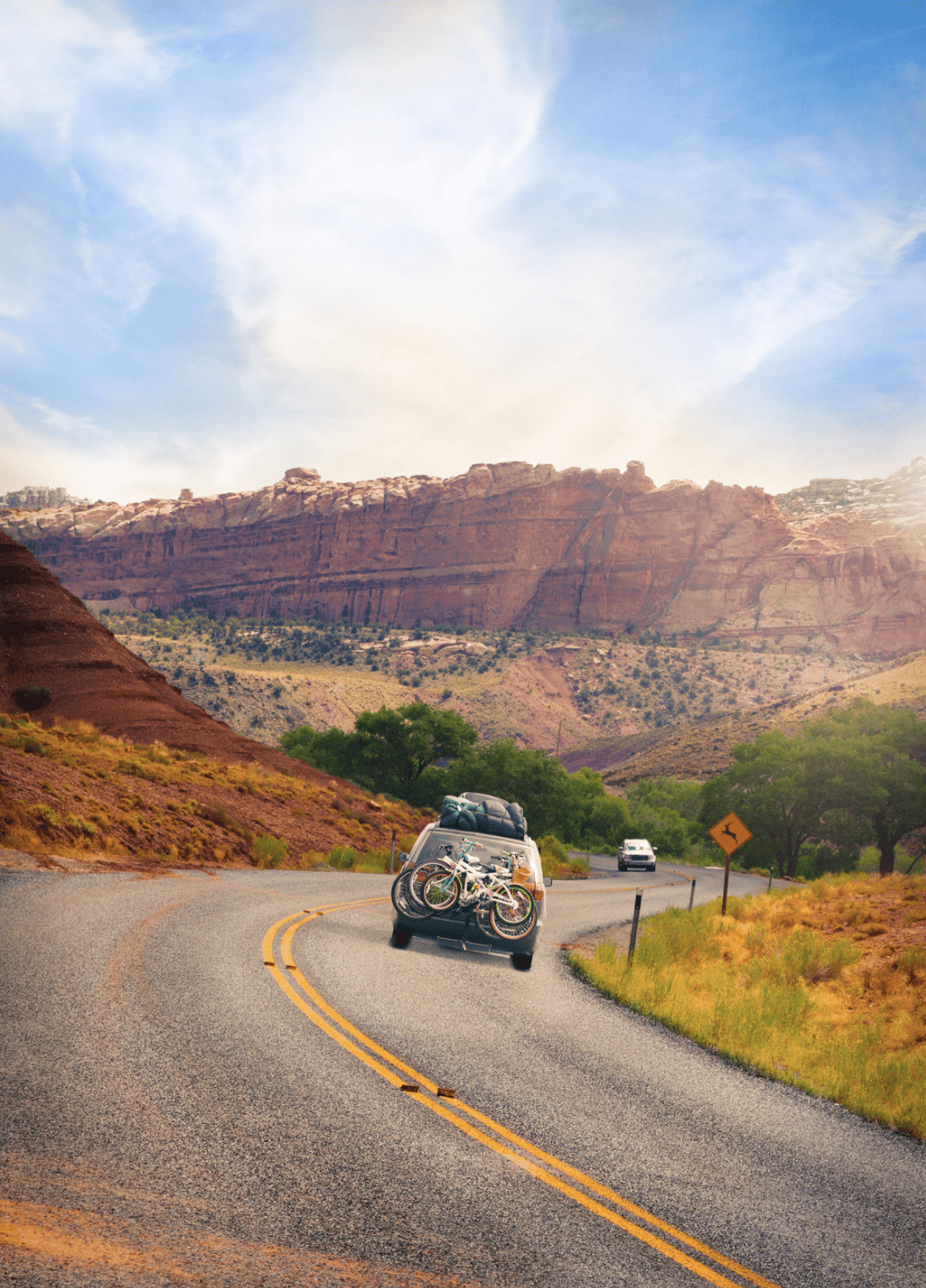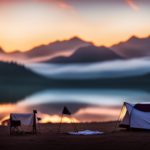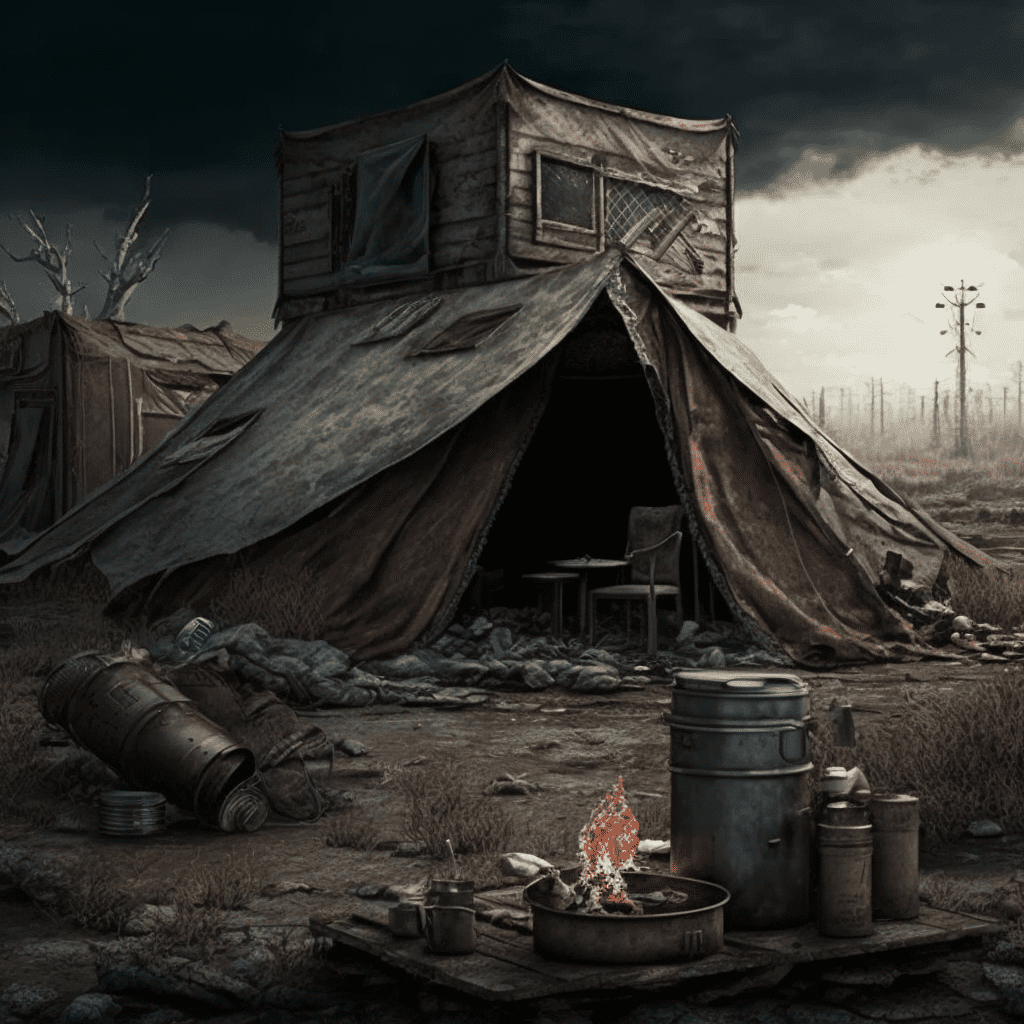Camping Places
Dispersed Camping
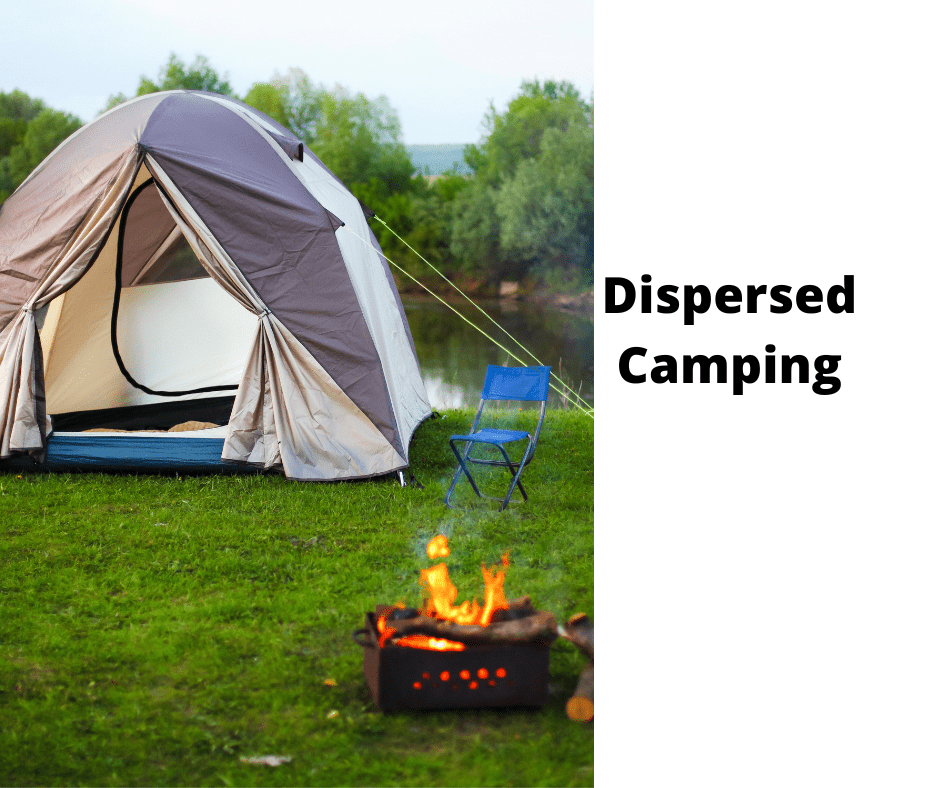
Scattered camping provides a wonderful chance to fully engage with the beauty of nature. By choosing a remote location for camping, you can find a perfect spot for your campsite and experience a great deal of solitude. While there are some drawbacks, such as the lack of amenities or being far from help in case of emergencies, scattered camping can offer an amazing adventure for nature lovers.
if you’re interested in trying dispersed camping, there are a few things you’ll need to know. first, ensure you understand the rules and regulations for dispersed camping in your area. also, pack everything you’ll need, including food, water, shelter, and firewood. finally, always practice Leave No Trace principles when camping in a dispersed area.
Dispersed Camping
Dispersed camping is a term given to the practice of using public land for camping. Most of this practice occurs on the Bureau of Land Management (BLM) or national forest land. Here are some reasons to disperse your campsite. Choosing a public park where camping is permitted is an advantage over private property. However, public land may have stricter camping rules and regulations than personal property. Nevertheless, dispersed camping is still an excellent option for many people.
Boondocking
Dispersed camping, or boondocking, is a form of camping that is entirely free of fees. It involves camping without any facilities and without using a designated campground. Fortunately, there are many places where you can go boondocking, including several campgrounds. However, it takes a bit of preparation and planning. Here are some tips to keep in mind while boondocking.
Before you head out, it’s essential to know what camping rules are in place in a national forest or park. Some National Forests and BLM lands offer primitive campsites with no amenities, but you can camp wherever there is no signage to warn you otherwise. While this may not be your cup of tea, it’s worth the extra effort. And you’ll save a ton of money. While boondocking in a national park is a great way to see as much of the park as possible, you’ll need to remember to respect your neighbors and the environment.
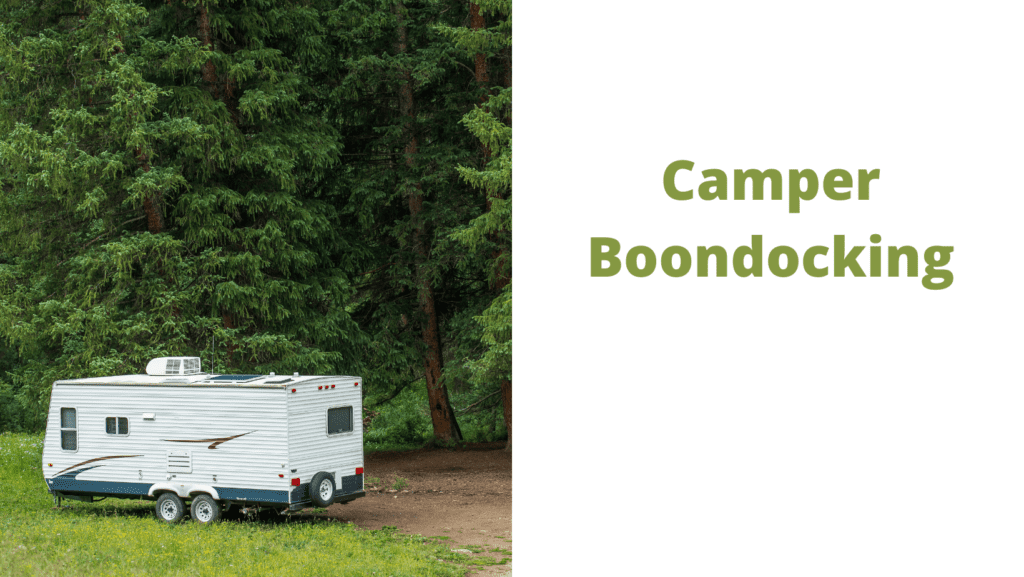
If you want to get off the grid and be completely disconnected from modern technology, boondocking is an excellent way to do it. This type of dispersed camping requires more planning and self-reliance than staying in a paid campground. Boondocking is also a great way to save money, since it’s much cheaper and more convenient than camping. You can even park your RV in a rest stop or parking lot of a business that welcomes RVs.
State Forests
You can camp in many State forests, but there are a few things to remember before setting up your campsite. First, you must always stay at least 200 feet away from a water source and be at least 25 feet from the trail’s edge. If you’re camping by yourself, avoid setting up near streams, rivers, or other courses, and be sure to keep your campsite out of sight of other campers.
For further information, consult the DCNR Bureau of Forestry’s camping guidelines. To find campsites, use Google Maps and turn on the satellite image layer. Zoom in and see the camp. Many are just clearings or pullouts off dirt roads.
The state forest system has uniform rules and terminology for dispersed camping. You can use state forest campgrounds for dispersed camping, but you must stay at least 150 feet from the road. If you plan to camp off the beaten path, you may want to choose a site that is closer to the road. In other words, do not camp at designated campgrounds.
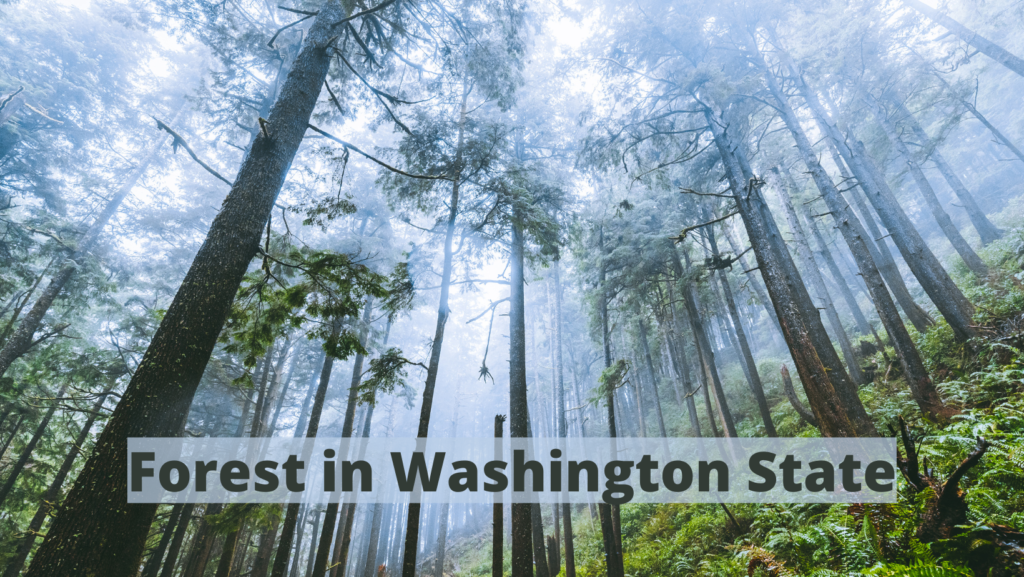
The State Forests of Michigan are one of the few places in the country where you can camp without disturbing other campers.
State forests for dispersed camping require a hard copy map. This is often difficult to find online, but you can purchase a copy at a local store or ranger station. Dispersed camping is not advertised with big “Camp Here!” signs. As such, finding a spot to set up your tent will take some extra work. Especially in the dark, identifying an unmarked campsite can be difficult.
National Forests
If you’re heading into the woods for a long weekend, consider taking advantage of dispersed camping opportunities. This type of camping is generally free but requires a permit for groups of 75 or more. Scout troops, outdoor clubs, and large families often use dispersed camping as a getaway. Backpackers planning a multi-day hike also enjoy dispersed camping, as the location can offer solitude and a primitive camping experience.
Because dispersed camping is often located in remote areas, check the regulations and limitations on setting up your camp.
While dispersed camping in national forests is a great way to save money and prove to the Forest Service that you are the boss, you need to remember some basic rules of backcountry fire safety. Before you go dispersed camping, pack your garbage and don’t dump waste near any water source.
Also, make sure to use portable toilets or RV bathrooms. Don’t forget to pack out toilet paper! Also, you must be considerate of the surrounding wildlife and vegetation.
The most important thing to remember about dispersed camping in national forests is that there are no hookups, so you will need to bring your power source. You can recharge your battery with solar power or a generator if you have an RV. Make sure to bring plenty of water and a trash bag, as you may have to carry out additional work if you don’t have access to water.
Conclusion
Dispersed camping is a great way to save money and have a more primitive camping experience. You can camp in state forests, national forests, and other remote areas as long as you follow the specific regulations for that area. Be sure to pack plenty of water and food, and remember to clean up after yourself.
Jason is the author of Laienhaft, a blog for all things outdoor and camping. If you’re looking for the best tent to take on your next camping trip, or need some advice on how to get started with recreational camping, Jason has you covered. He’s also an expert on survival skills – if you’re ever lost in the wilderness, he’s the guy you want to find!
Camping Activities
Eco-Futuristic Summer Camping Experience: Revolutionizing the Industry with Sustainable Technology
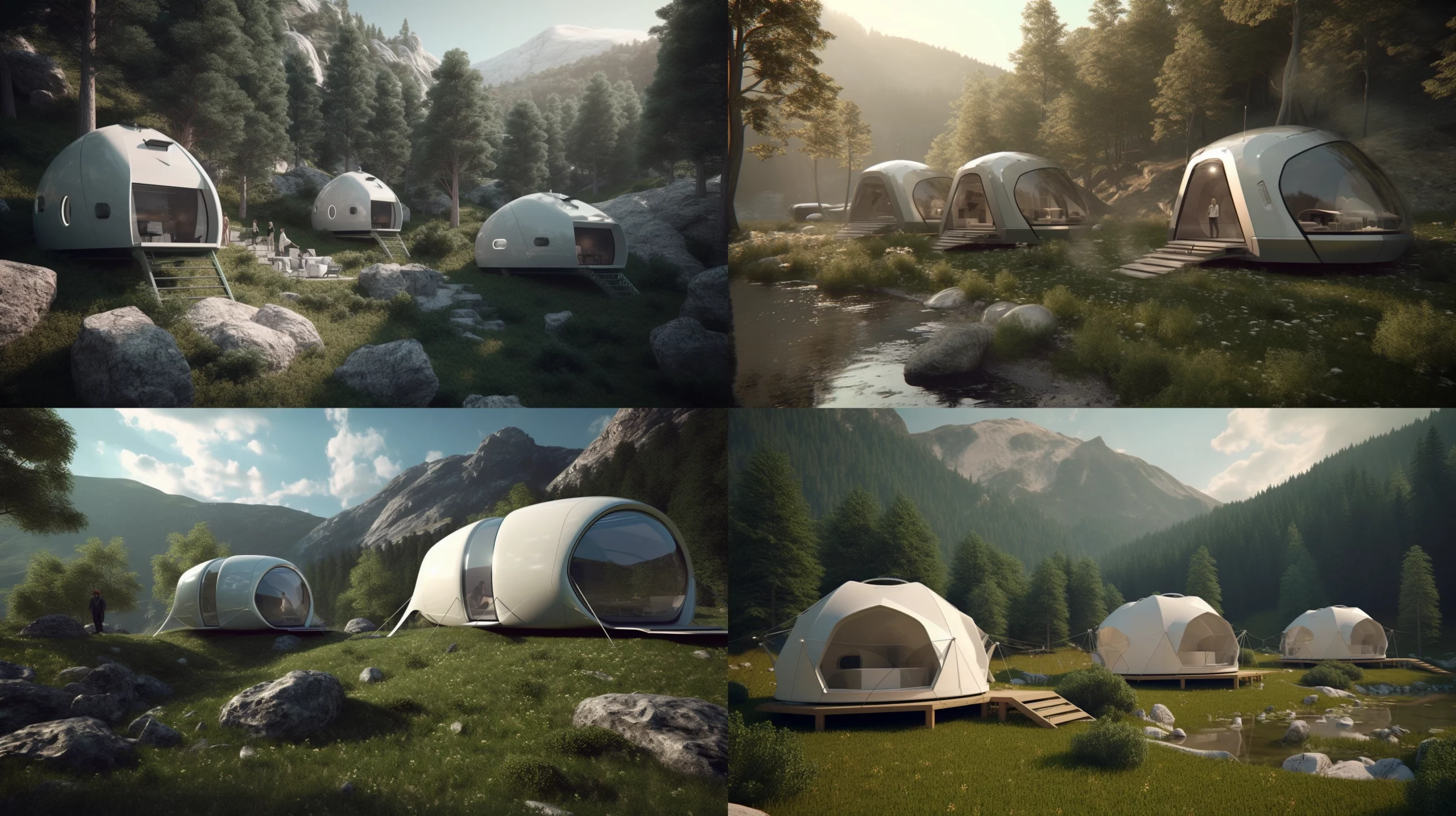
Discover the perfect eco-friendly summer camping experience in the United States, designed to reduce environmental harm and deepen your connection with nature.
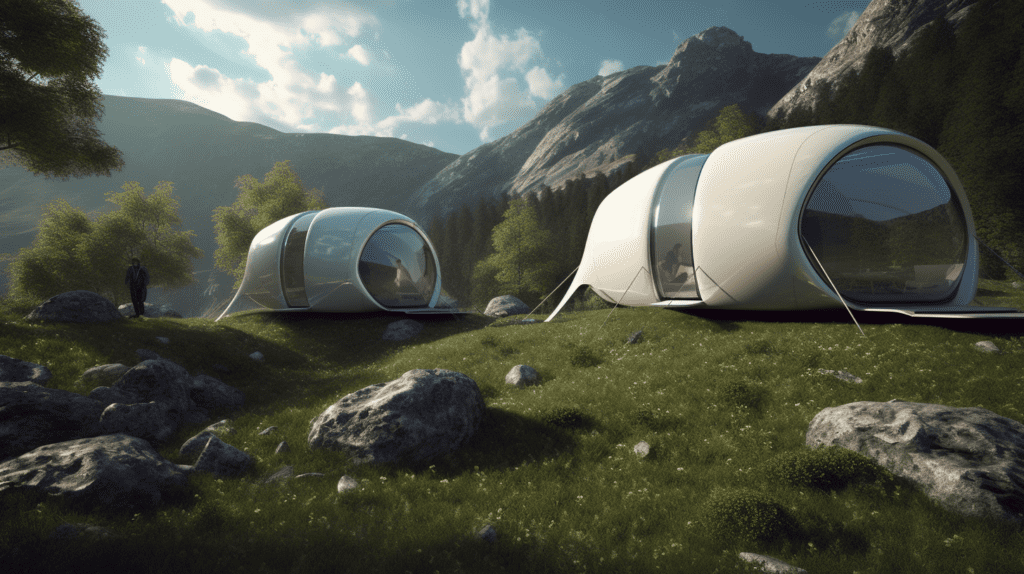
This sustainable and innovative camping experience combines cutting-edge technology, environmentally-friendly practices, and luxurious amenities to create the perfect eco-friendly getaway. Stay ahead of the curve and explore the future of camping with our unique fusion of green technologies, energy-efficient designs, and eco-conscious philosophies.
Top Features
Solar-Powered Eco-Lodges
Stay in our luxurious, energy-efficient eco-lodges, powered by state-of-the-art solar panels. These lodges offer all the modern amenities you need while utilizing renewable energy, ensuring a minimal environmental impact. Wake up to breathtaking views of nature while knowing you’re contributing to a greener future.
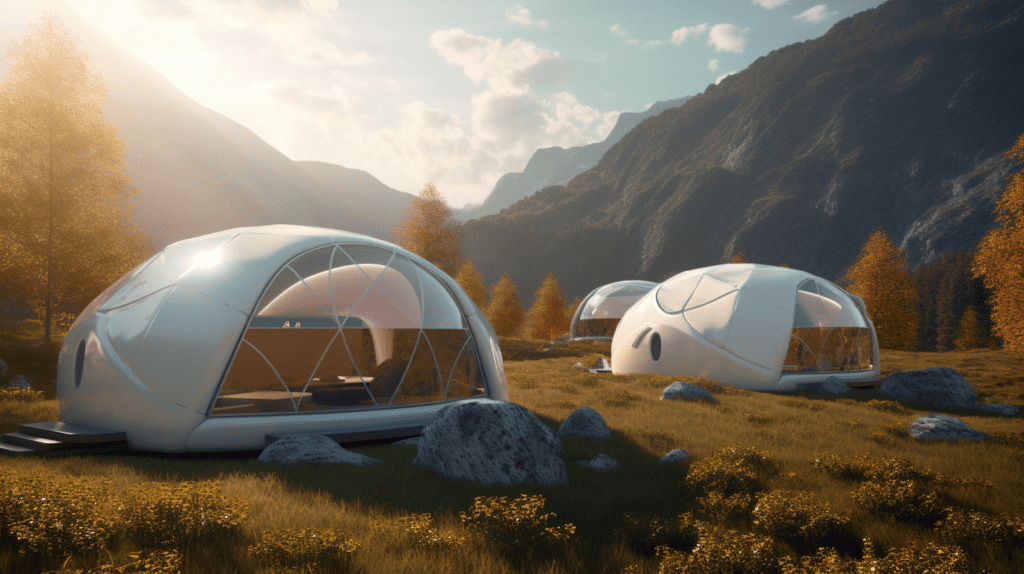
Zero-Waste Campsites
Practice sustainable living with our zero-waste campsites, designed to minimize waste and promote recycling. Each campsite comes equipped with recycling stations, compost bins, and eco-friendly products to help you maintain a clean and green camping experience.
Smart Water Management
Conserve water and minimize waste with our innovative water management systems. Our eco-campsites feature rainwater harvesting, greywater recycling, and water-efficient fixtures, ensuring you can enjoy a guilt-free, eco-conscious getaway.
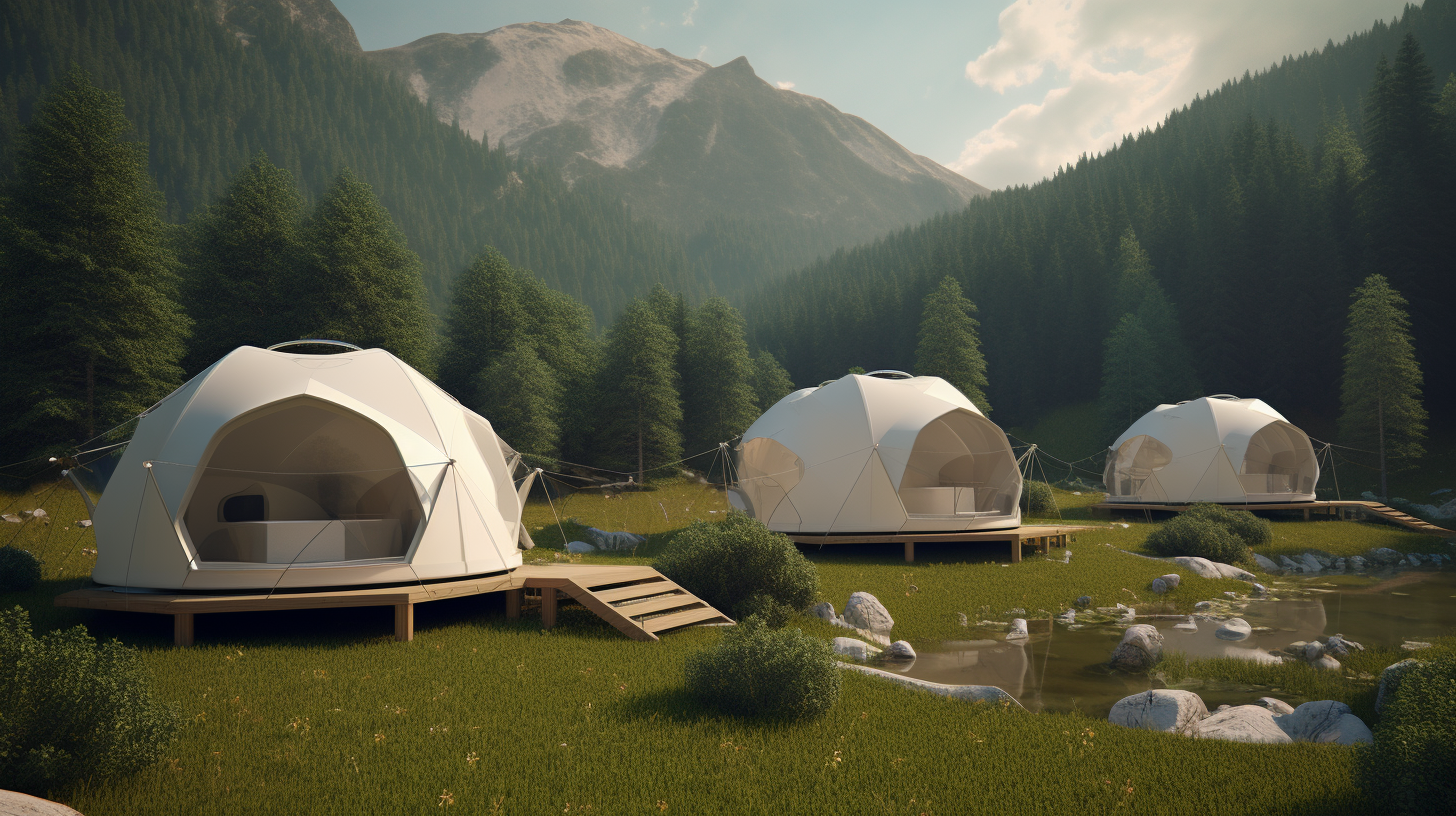
Electric Vehicle (EV) Charging Stations
Travel in style and sustainability with our on-site electric vehicle charging stations. These stations support a range of EV models, allowing you to power up your vehicle while enjoying the serene natural surroundings.
Green Adventure Activities
Explore the great outdoors with our curated selection of eco-friendly adventure activities. From guided nature walks and wildlife spotting to sustainable fishing and kayaking, there’s something for everyone in our green activity lineup.
Environmental Education Programs
Learn about environmental conservation and the importance of sustainability with our on-site educational programs. Led by knowledgeable staff, these programs aim to inspire campers of all ages to adopt a more eco-conscious lifestyle.
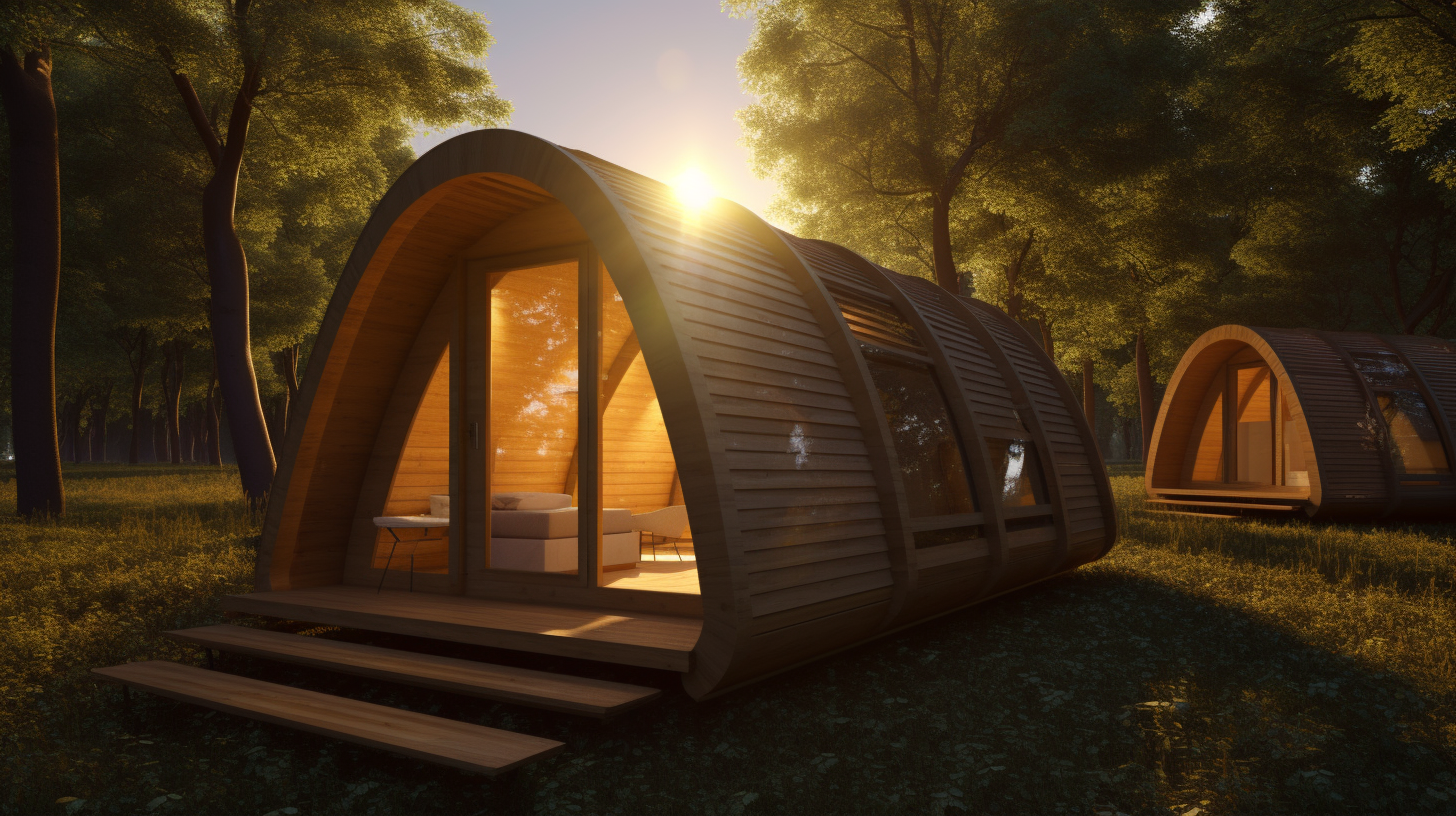
Local and Organic Dining
Savor delicious, farm-to-table meals at our on-site dining facilities. We prioritize locally-sourced, organic ingredients and environmentally-friendly practices to provide you with an unforgettable culinary experience.
Digital Detox Zone
Unplug and recharge in our designated digital detox zone, where you can reconnect with nature without the distractions of modern technology. This tranquil space encourages mindfulness and relaxation, promoting a deeper connection with the natural world.
Additional Features
Sustainable Transportation Options
Promote green travel by offering sustainable transportation options to and from the campsite. Partner with local eco-friendly transportation providers, such as electric shuttles and bike rental services, to encourage campers to reduce their carbon footprint while exploring the area.
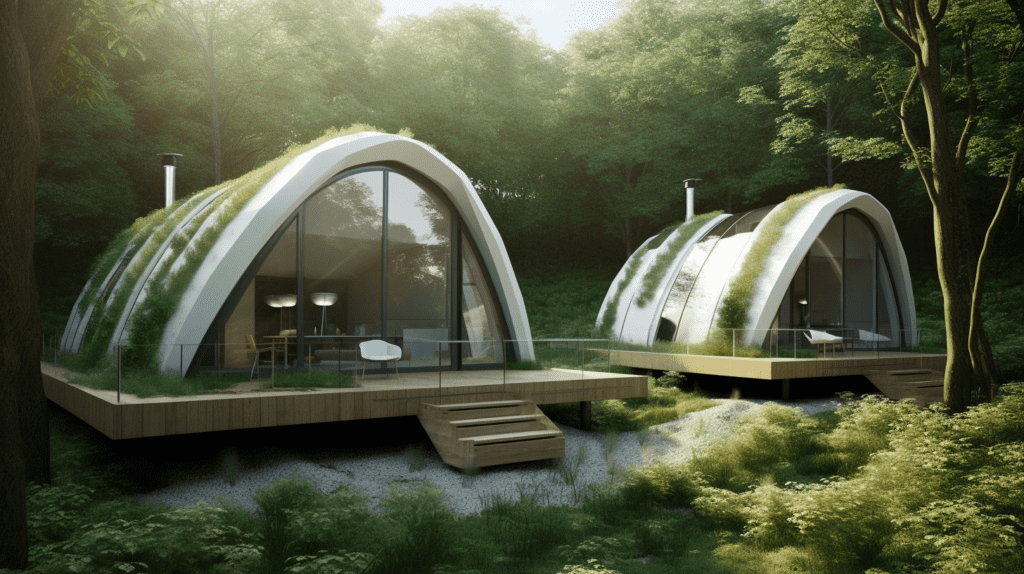
Carbon Offset Programs
Help campers offset their carbon emissions by partnering with reputable carbon offset programs. By supporting reforestation, renewable energy, or other climate-positive initiatives, guests can contribute to combating climate change and making their camping trip more sustainable.
Biodegradable Products and Eco-Friendly Materials
Provide campers with biodegradable products and eco-friendly daily-use materials, such as toiletries, tableware, and bedding. This reduces waste and helps raise awareness about the importance of using environmentally responsible products.
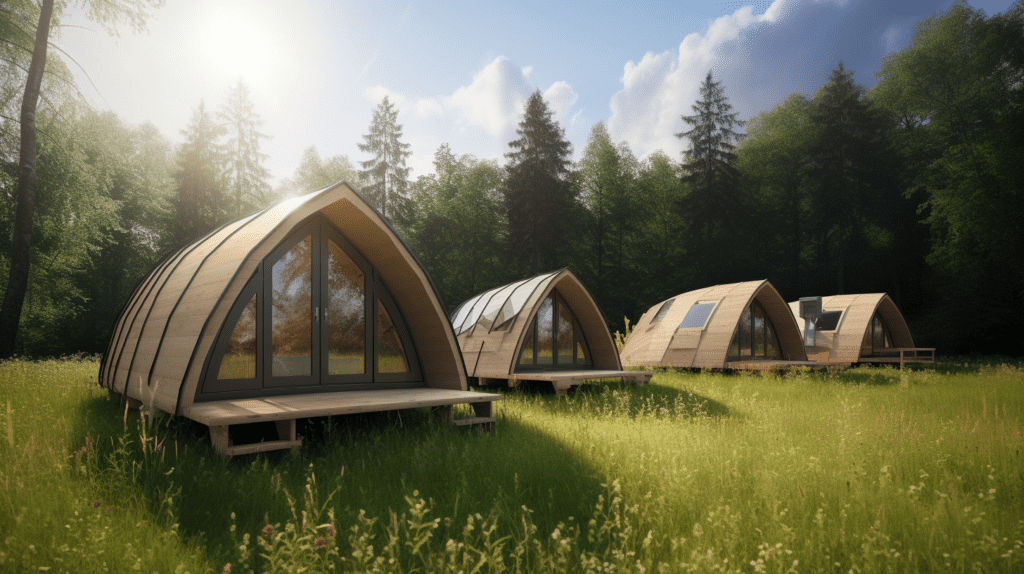
Natural Resource Conservation Initiatives
Implement on-site conservation initiatives to protect and preserve the surrounding natural resources. These initiatives may include erosion control measures, native species planting, and habitat restoration projects to ensure a thriving ecosystem for future generations.
Supporting Local Communities
Collaborate with local communities and businesses to promote sustainable tourism and support the local economy. This can include sourcing food and supplies from nearby farmers and artisans, as well as partnering with local guides and experts for workshops and activities.

Responsible Wildlife Interactions
Educate campers on responsible wildlife interactions and establish guidelines for observing and interacting with animals in their natural habitat. This will help protect the wildlife and ensure a safe, enjoyable experience for all campers.
Eco-Conscious Landscaping and Site Design
Incorporate eco-conscious landscaping and site design into the campgrounds, using native plants, permeable surfaces, and other sustainable design elements to minimize the environmental impact and blend seamlessly with the natural surroundings.

Conclusion
Experience the future of camping with our eco-futuristic summer camping experience in the USA. Our fusion of sustainable practices, cutting-edge technology, and luxurious amenities offers a unique opportunity to explore the great outdoors while minimizing your environmental impact. Join us in revolutionizing the camping industry and creating a greener future for all.
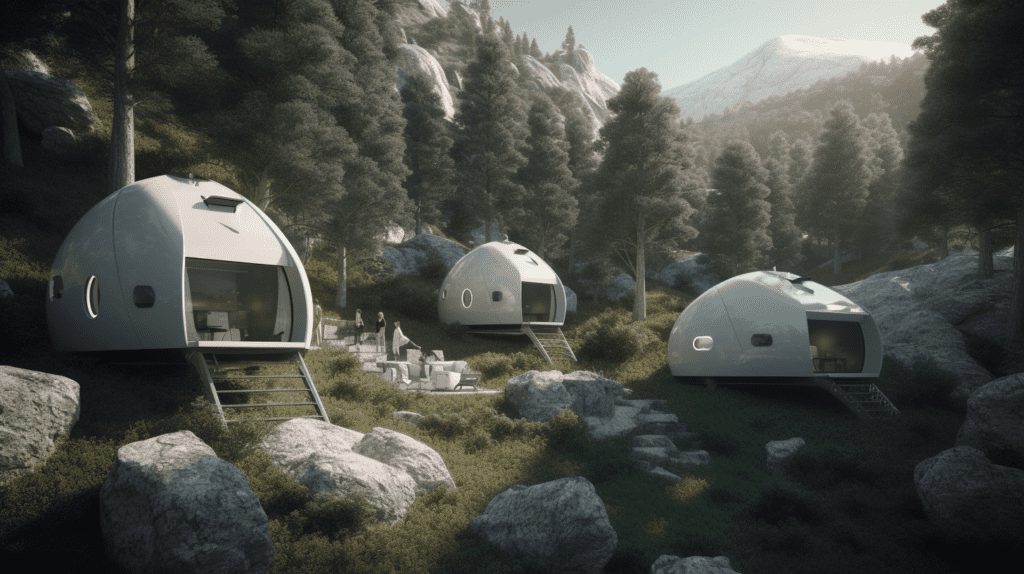
The eco-futuristic summer camping experience offers a comprehensive approach to sustainability and environmental stewardship. By incorporating these additional features and practices, campers can enjoy a truly green getaway while making a positive impact on the planet. Together, we can revolutionize the camping industry and inspire others to embrace a more eco-conscious lifestyle.
Jason is the author of Laienhaft, a blog for all things outdoor and camping. If you’re looking for the best tent to take on your next camping trip, or need some advice on how to get started with recreational camping, Jason has you covered. He’s also an expert on survival skills – if you’re ever lost in the wilderness, he’s the guy you want to find!
Backpacker
Laienhaft Acquires Infos-Campings.Com Domain – Our Joined Way Forward to Experience Outdoor, Camping, and Making Friends and Live the Experience

We are excited to hear from you at Laienhaft and would like to invite you to join us on an adventure filled with outdoor activities, camping, and the chance to make new friendships to enhance your experiences. Our website makes it easy for you to book a tour, find companions to share in the fun with, leave a review, or reach out with any questions you may have. We can’t wait to hear from you and hope to have the opportunity to welcome you on a future adventure with us soon! Thank you for choosing Laienhaft!
Laienhaft Acquires Infos-Campings.Com Domain
Laienhaft is proud to announce the acquisition of infos-campings.com domain. The website is a very popular domain in the camping and outdoors industry, with a loyal following of readers.
Laienhaft is committed to providing the best possible camping experience for all of our customers, and we believe that this acquisition will help us to better serve the needs of campers. We are welcoming the infos-campings.com domain reader and look forward to continuing to provide the high-quality content that they have come to expect from us.
Our Joined Way Forward to Experience Outdoor, Camping, and Making Friends and Live the Experience
Have a question about the great outdoors? We’ve got you covered! Here at Laienhaft, we are dedicated to providing answers to all of your outdoor and camping questions. Whether you’re wondering how to start a campfire or how to pitch a tent, we have the answer for you. We also offer tips and advice on all things camping, from what to pack for a hike to where to find the best campsites. So whatever information you’re seeking, we’ll have the answer for you!
When you’re planning a camping trip, there’s a lot to think about. What kind of shelter will you need? What food and supplies will you need to bring? And how will you keep everyone comfortable and safe while you’re away from home?
One important thing to consider is how you’ll change clothes while camping. If you’re staying in a tent, you’ll need to be careful not to track dirt and mud inside. And if you’re pregnant or have young children with you, they’ll need a place to change that’s out of the elements. Here are some tips for changing clothes while camping:
- Choose clothing that’s easy to layer. That way, you can take off or put on layers as the temperature changes.
- Pack a small bag with essentials like shampoo, soap, and a towel. This way, you can freshen up even if there’s no running water nearby.
- If you’re pregnant or breastfeeding, consider bringing a nursing cover or other item that will make it easy to breastfeed or pump in privacy.
With a little planning, changing clothes while camping can be easy and stress-free. So go ahead and enjoy your time in the great outdoors!
No matter what you’re looking for, we want to cover your boiling question to help you out. Whether you’re trying to figure out how to change clothes while camping or you’re looking for tips on camping with friends, there’s a wealth of information available online.
Of course, not all of it is necessarily accurate – there are plenty of myths and urban legends about camping, too. For example, you may have seen articles claiming that camping tents can cause cancer, or that pregnant women shouldn’t go camping.
However, as long as you use your common sense and do some research, you should be able to distinguish between the facts and the fiction. And if you ever get stuck, there’s always someone out there who’s happy to help – after all, that’s what the camping community is all about!
Pregnant women need to take special care when camping, as they are at increased risk for heat exhaustion and dehydration. There are also several tips that all campers should follow, such as staying hydrated, using sunscreen, and being aware of wildlife. With a little planning and preparation, camping can be a safe and enjoyable experience for everyone.
It is Ok to Go Camping While Pregnant
Camping while pregnant is not only important for mom, but it provides a few reasons why they should care. It is a fun and healthy experience for both mom and baby. Select outdoor activities which are safe and fun, but keep them in perspective to your physical condition and the surrounding environment.
Before setting out on a camping trip during pregnancy, you should consult with your doctor. Pregnant women have special needs when it comes to camping, but with a little planning, they can enjoy all the benefits of this great outdoor activity. Here are a few tips to help you plan a safe and enjoyable trip:
- Check with your doctor before you go. Some medical conditions may make it unsafe for you to camp, so be sure to get the OK from your healthcare provider first.
- Choose an easy-to-access campsite. You’ll want to be able to get in and out of your tent easily, so look for a site that’s close to the parking area and has level ground.
- Pack lightly. Carrying a heavy load can be tough on your back and hips, so pack only the essentials.
- Wear comfortable shoes. hiking boots or other closed-toe shoes will protect your feetBy following these simple tips, pregnant women can safely enjoy all that camping has to offer.
For many pregnant women, the idea of spending a night in a tent surrounded by nature can be both appealing and anxiety-inducing. However, with a little planning and preparation, camping can be a safe and enjoyable experience for expectant mothers.
What Size Inverter is Needed for Camping and Outdoor Activities?
When it comes to camping and outdoor activities, having the right size inverter needed for camper is crucial. It ensures a seamless power supply for all your electronic devices, from charging phones to powering laptops. Opt for a portable inverter with sufficient wattage output to meet your specific needs and enjoy a hassle-free outdoor experience.
Wondering About the Best Way to Start?
When it comes to the great outdoors, there is no such thing as a stupid question. Whether you’re wondering about the best way to start a campfire or how to pitch a tent, we are here to help. We want to answer all of your outdoor and camping questions so that you can make the most of your time in nature. So don’t be afraid to ask away – we promise, we won’t judge. After all, we were all newbies once, too.
Looking for a fun way to show your love of the outdoors? Check out our collection of Funny Camping and Outdoor License Plates! From clever sayings to punny jokes, these license plates are sure to get a laugh from everyone who sees them. We’ve got a plate for every type of camper, from the more serious ones who like to rough it in the wilderness to the less experienced campers who are just there for the s’mores.
So whether you’re looking for a new way to show off your personality or you’re just looking for a laugh, our Funny Camping and Outdoor License Plates are sure to Please note that some of our plates are available for personalization, so be sure to check out each product page for more information. Happy shopping!
Many people enjoy camping, but it can be difficult to know how to camp safely and effectively. There are many different types of camping, from car camping to backpacking, and each has its own set of safety concerns. For example, car camping is generally safe, but you should be aware of the risks of leaving your car unattended in a remote area.
Backpacking can be more dangerous, as you will be carrying all of your supplies with you and maybe camping in unfamiliar territory. It is important to research the area you will be hiking in and to take the necessary precautions, such as carrying a map and compass.
The camp kitchen is the heart of any campsite. It’s where meals are prepared, stories are shared, and memories are made. A well-equipped camp kitchen should include everything you need to make your favorite recipes, from a stove and pots and pans to utensils and food storage containers. If you’re new to camping, you may not know where to start when it comes to stocking your camp kitchen. Luckily, we’ve put together a list of essential items that will help you make the most of your time in the great outdoors.
Laienhaft welcomes you to their joined way forward to experience outdoor camping and making friends. They love feedback from their customers and enjoy hearing about their experiences. Laienhaft loves being outdoors, camping, and making new friends. They are excited to have you join them on this journey to experience all that the outdoors has to offer.
Spending time together in the great outdoors can be a bonding experience for both kids and adults. Camping is the perfect opportunity to unplug from technology and connect with nature—and each other. There are many different activities that can be enjoyed while camping, from hiking and fishing to playing games and roasting marshmallows over a campfire. No matter what you do, spending time in the wilderness is a great way to create lasting memories with your loved ones. So get out there and explore—you might just surprise yourself at how much fun you have!
Laienhaft knows that there is nothing like getting out in nature and enjoying the fresh air and scenery. Camping is a great way to do this and it is also a great way to meet new people. Laienhaft looks forward to hearing about your experiences and sharing in the great outdoors together.
For more information, please contact: press@laienhaft.com
Jason is the author of Laienhaft, a blog for all things outdoor and camping. If you’re looking for the best tent to take on your next camping trip, or need some advice on how to get started with recreational camping, Jason has you covered. He’s also an expert on survival skills – if you’re ever lost in the wilderness, he’s the guy you want to find!
Beginners Guides
Laienhaft Acquires aircooled-tv.com Domain to Add Focus on Aircooled Campervans

Laienhaft is thrilled to announce the acquisition of the domain aircooled-tv.com. This strategic move is aimed at enhancing our coverage of aircooled campervans, a passion shared by many. We are confident that with this new domain, we will be able to provide our customers with top-notch services and support. Stay tuned for more updates as we emphasize our focus in this area! Laienhaft is dedicated to catering to outdoor and camping enthusiasts who have a special fondness for aircooled campervans. These unique vehicles are perfect companions for outdoor adventures, offering a perfect blend of exploration and comfort. We are committed to providing valuable content and resources to help campervan owners make the most of their experiences. Our mission is to bridge the gap between rugged exploration and the comfort of home, inspiring our audience to discover new destinations and fully enjoy their aircooled campervans.
The new category section will feature videos and articles about Laienhaft’s campervans, photos, and information about the company’s products and services. The category will also provide an online venue for customers to ask questions and share their own experiences with campervans. Few experiences are as freeing as hitting the open road in an air-cooled campervan. With the wind in your hair and the world at your fingertips, you can explore to your heart’s content. Best of all, camping in an air-cooled campervan allows you to get off the beaten path and really experience nature. No more crowded campgrounds and noisy RVs – with an air-cooled campervan, you can find your own private oasis. Whether you’re picnicking in a meadow or sleeping under the stars, an air-cooled campervan will make your camping experience truly special.
There is no denying that modern campers and RVs have come a long way in terms of fuel efficiency and noise reduction. However, there is still something to be said for the classic appeal of an air-cooled VW Camper.
With their unique style and retro appeal, these campers are becoming increasingly popular among those who enjoy spending time in nature. While they may be more noisy than their modern counterparts, air-cooled VW Campers still offer all the comforts and amenities that campers and RV enthusiasts have come to expect.
The integration of aircooled-tv.com is part of Laienhaft’s larger strategy to focus on its core competencies and expand its reader base. Laienhaft is a website for lovers of outdoor and camping, many have an aircooled campervan. We believe that these unique vehicles offer the perfect way to explore the great outdoors, and we aim to provide information and resources that will help owners get the most out of their campervans. Our website features articles on topics such as choosing the right campervan, preparing for a camping trip, and dealing with common problems. We also offer a forum where owners can share tips and advice, and ask questions about their campervans. Whether you’re an experienced campervan owner or you’re just considering buying one, we hope you’ll find Laienhaft to be a valuable resource.
With the new domain integrated into our main site, Laienhaft will be able to better showcase its unique capabilities in designing and building high-quality air-cooled campervans. This domain allows Laienhaft to expand its operations and provide even more content and resources for air-cooled enthusiasts worldwide.
Whether you’re looking to add an extra bedroom to your home or you need mobile office space, an air-cooled campervan can be a great option. Not only are these vehicles very affordable, but they’re also easy to maintain and operate.
While most people think of them as being slow and inefficient, aircooled campervans can actually be quite fuel-efficient. In addition, they’re much quieter than their diesel-powered counterparts, making them ideal for camping trips and long-distance travel.
In recent years, the value of air-cooled VW Campers has risen more quickly than their pop-top roofs. As a result, there is an increasing interest in these fine campervans. While the initial investment may be higher than that of a traditional campervan, the long-term value of an air-cooled VW Camper is undeniable.
With proper care and maintenance, these campers can last for decades, providing owners with a lifetime of memories. In addition to their increased value, air-cooled VW Campers offer a number of other advantages over their traditional counterparts.
While it is true that modern and current models are more fuel-efficient and generate less noise, there is still something to be said for the old models. For one thing, they are loved by many for their unique style and classic appeal. Additionally, they are ideal for those who enjoy spending time in nature, as they tend to be noisier than their newer counterparts.
As a result, it is easy to see why air-cooled VW Campers are becoming increasingly popular among campers and RV enthusiasts alike. So whether you’re looking for a classic camper or a more modern RV, there’s sure to be an option that’s perfect for you.
There is something special about spending time in nature. Whether you are hiking through the woods, paddling down a river, or simply enjoying a picnic in the park, being outdoors can help to reduce stress and promote a sense of well-being. One of the best ways to enjoy nature is to go camping. Camping allows you to get away from the hustle and bustle of everyday life and truly appreciate the peace and beauty of the natural world. It also gives you the opportunity to explore new places and try new things. If you have never been camping before, there are a few things you should know before you hit the road.
If you’re looking for a way to explore the great outdoors without roughing it, an air-cooled campervan might be the perfect solution. These vans are equipped with all the comforts of home, including a kitchen, sleeping area and bathroom. Plus, they’re built on a tough off-road chassis that can handle even the most rugged terrain. Whether you’re driving to a secluded campsite or venturing off the beaten path, an air-cooled campervan can take you wherever you want to go. Best of all, these vans are easy to drive and come with everything you need for a comfortable trip. So if you’re ready to hit the road, an air-cooled campervan is the perfect way to explore the world.
If you’re reading this, then chances are you’re one of the many people who have been enthralled by the sight of an aircooled campervan. Whether it’s the sleek lines of a VW Westfalia or the rugged charm of a Baywindow, there’s something about these vans that just seems to capture the imagination. Here at laienhaft, we’re passionate about aircooled campervans. So come on in and join the laienhaft community!
For more information, please contact: press@laienhaft.com
Jason is the author of Laienhaft, a blog for all things outdoor and camping. If you’re looking for the best tent to take on your next camping trip, or need some advice on how to get started with recreational camping, Jason has you covered. He’s also an expert on survival skills – if you’re ever lost in the wilderness, he’s the guy you want to find!
-

 Beginners Guides1 month ago
Beginners Guides1 month agoLaienhaft Acquires aircooled-tv.com Domain to Add Focus on Aircooled Campervans
-

 Backpacker1 month ago
Backpacker1 month agoLaienhaft Acquires Infos-Campings.Com Domain – Our Joined Way Forward to Experience Outdoor, Camping, and Making Friends and Live the Experience
-
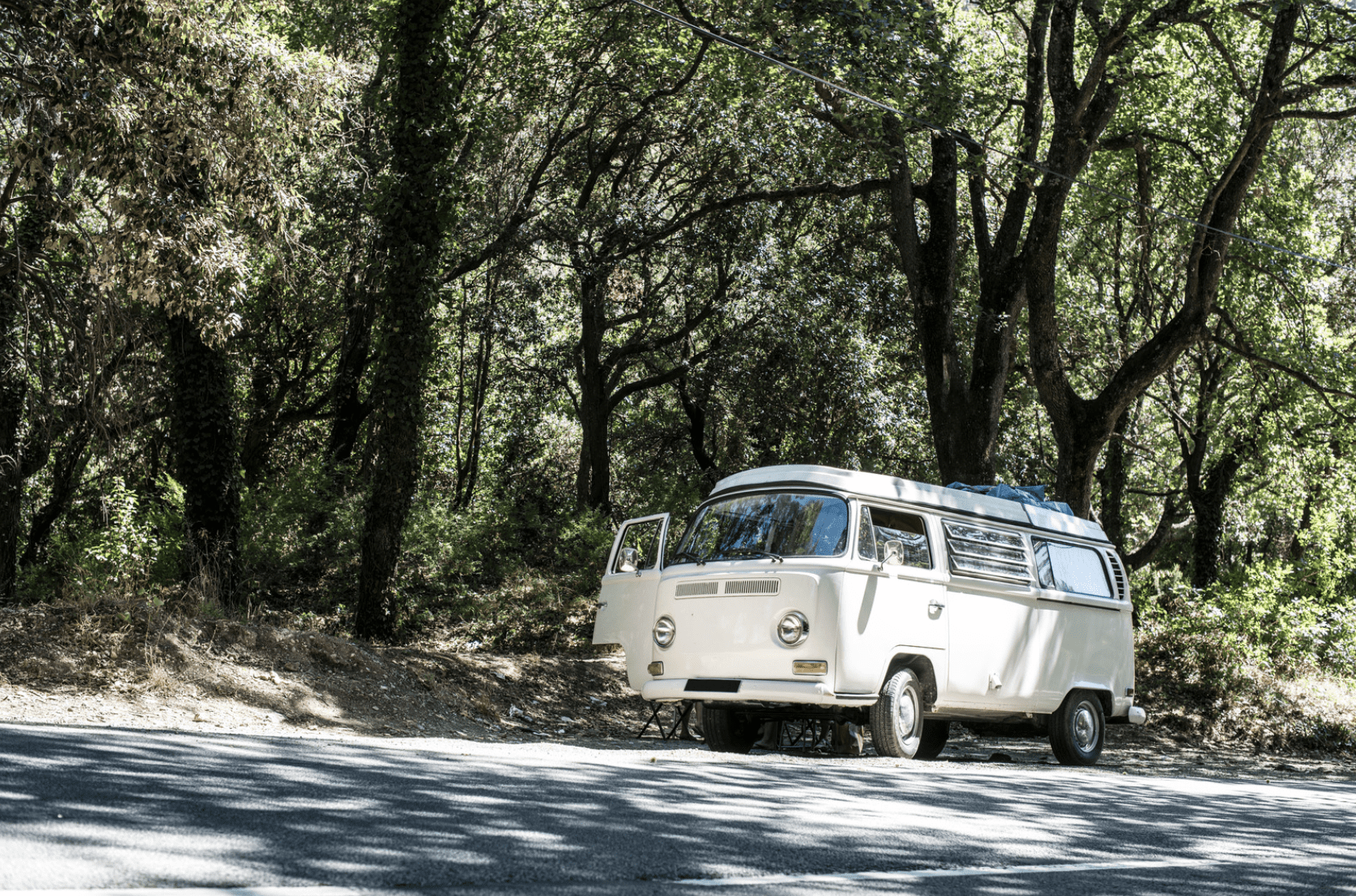
 Beginners Guides1 month ago
Beginners Guides1 month agoThe Guide to the Best Camping License Plate Ideas for Cars and RVs
-
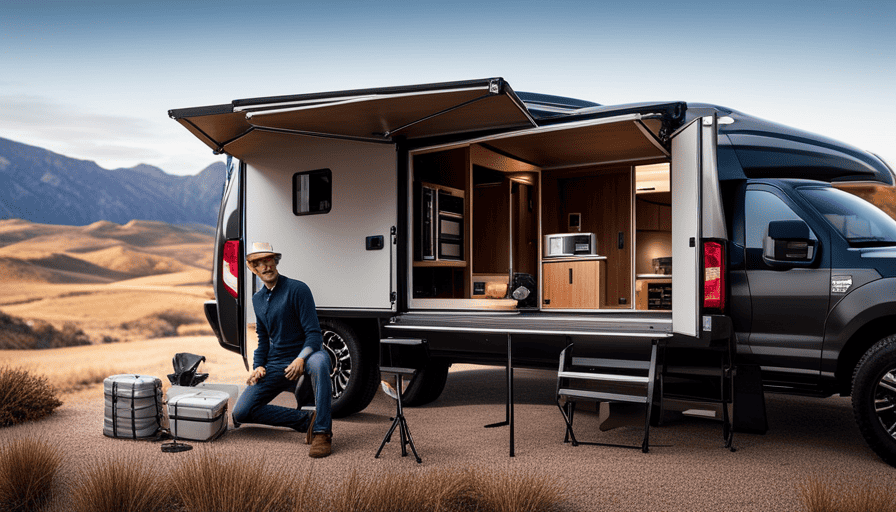
 Beginners Guides2 months ago
Beginners Guides2 months agoHow To Build A Slide In Truck Camper
-
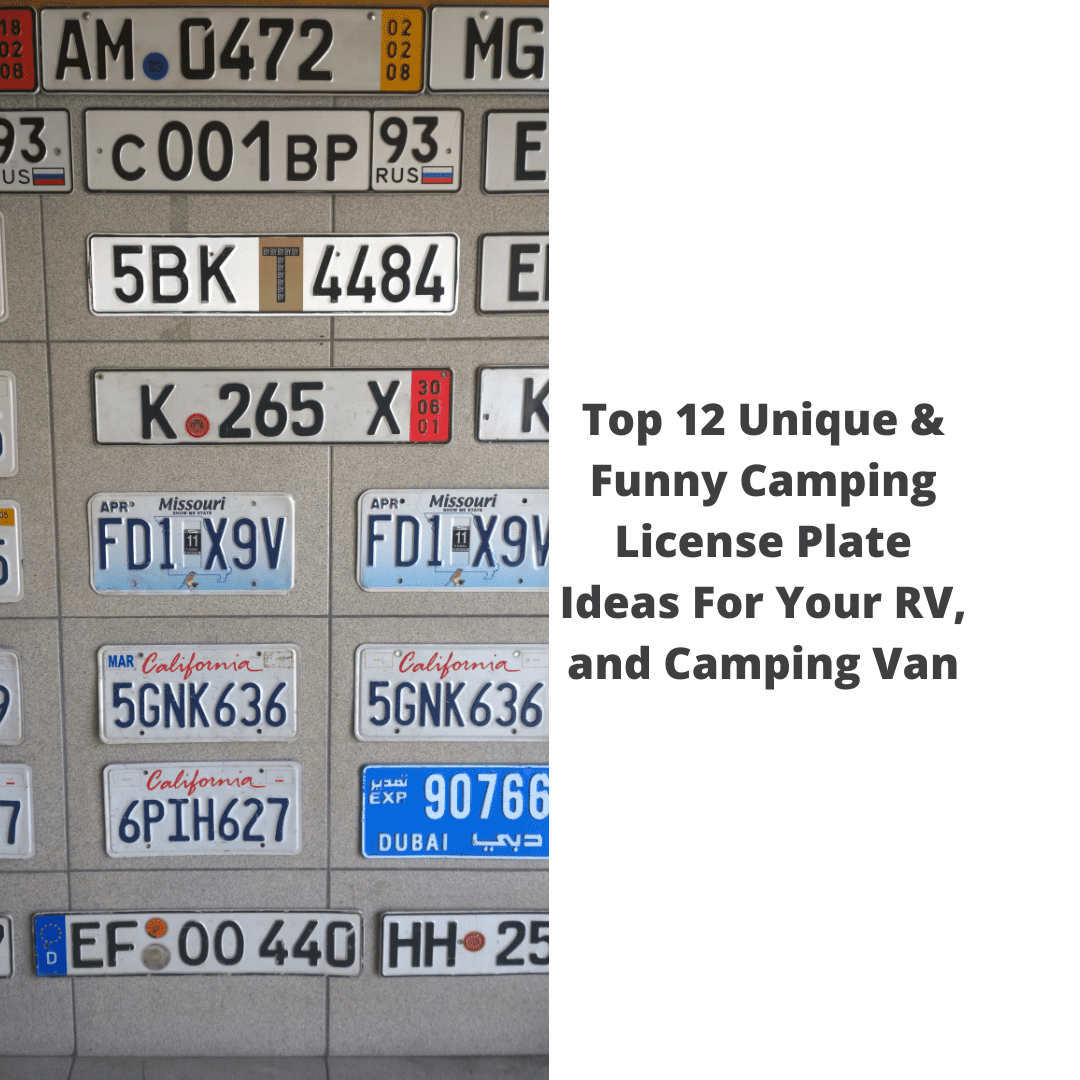
 License Plate1 month ago
License Plate1 month agoTop 12 Unique & Funny Camping License Plate Ideas For Your RV, and Camping Van
-

 Beginners Guides1 week ago
Beginners Guides1 week agoHow To Install A Camper Shell
-

 Beginners Guides2 weeks ago
Beginners Guides2 weeks agoHow To Lubricate Pop Up Camper Lift System
-

 Beginners Guides1 month ago
Beginners Guides1 month agoWhy Does My Throat Hurt After Camping? The Most Common Reasons and How to Fix Them


